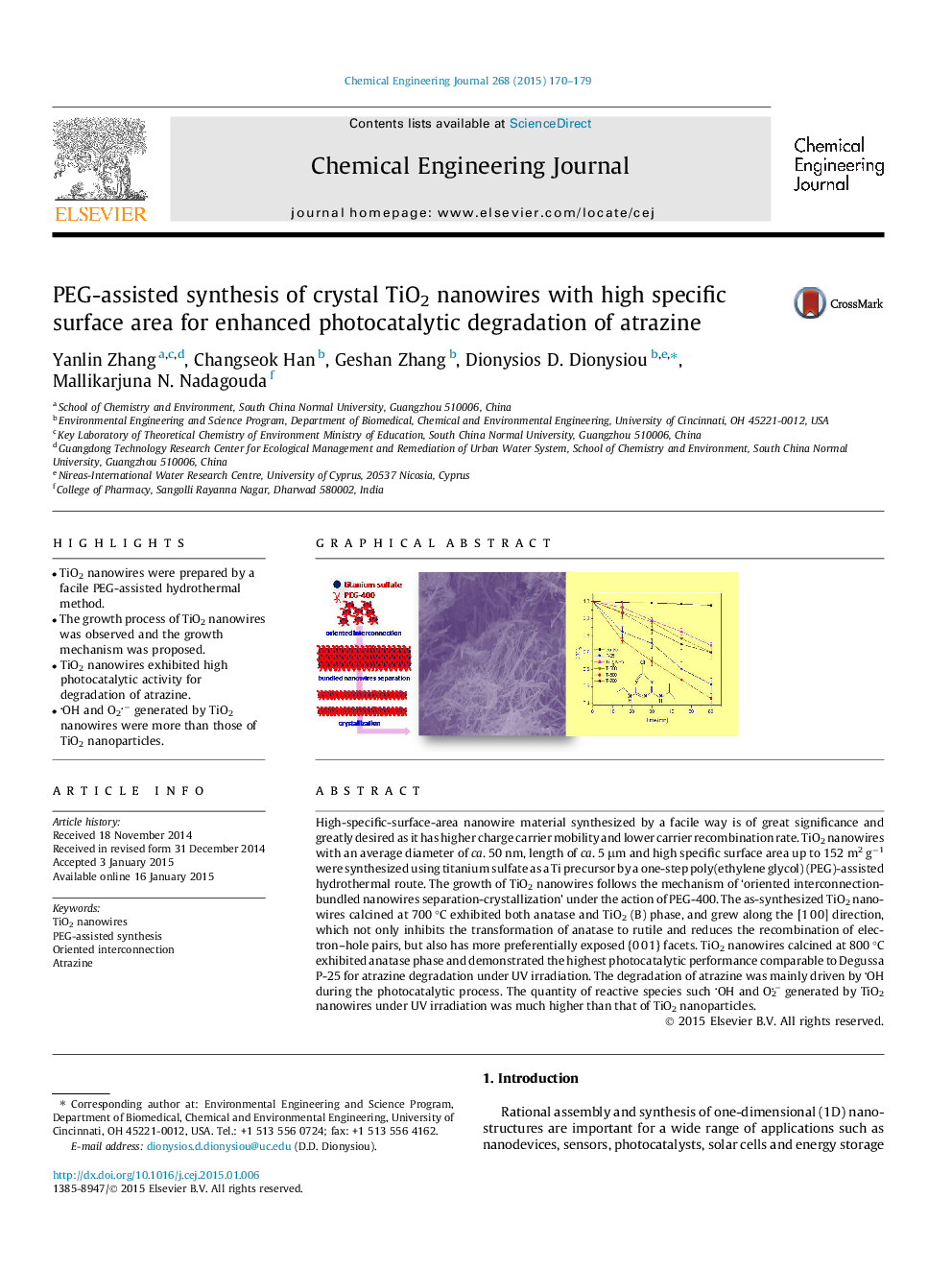| Article ID | Journal | Published Year | Pages | File Type |
|---|---|---|---|---|
| 146590 | Chemical Engineering Journal | 2015 | 10 Pages |
•TiO2 nanowires were prepared by a facile PEG-assisted hydrothermal method.•The growth process of TiO2 nanowires was observed and the growth mechanism was proposed.•TiO2 nanowires exhibited high photocatalytic activity for degradation of atrazine.•OH and O2− generated by TiO2 nanowires were more than those of TiO2 nanoparticles.
High-specific-surface-area nanowire material synthesized by a facile way is of great significance and greatly desired as it has higher charge carrier mobility and lower carrier recombination rate. TiO2 nanowires with an average diameter of ca. 50 nm, length of ca. 5 μm and high specific surface area up to 152 m2 g−1 were synthesized using titanium sulfate as a Ti precursor by a one-step poly(ethylene glycol) (PEG)-assisted hydrothermal route. The growth of TiO2 nanowires follows the mechanism of ‘oriented interconnection-bundled nanowires separation-crystallization’ under the action of PEG-400. The as-synthesized TiO2 nanowires calcined at 700 °C exhibited both anatase and TiO2 (B) phase, and grew along the [1 0 0] direction, which not only inhibits the transformation of anatase to rutile and reduces the recombination of electron–hole pairs, but also has more preferentially exposed {0 0 1} facets. TiO2 nanowires calcined at 800 °C exhibited anatase phase and demonstrated the highest photocatalytic performance comparable to Degussa P-25 for atrazine degradation under UV irradiation. The degradation of atrazine was mainly driven by OH during the photocatalytic process. The quantity of reactive species such OH and O2− generated by TiO2 nanowires under UV irradiation was much higher than that of TiO2 nanoparticles.
Graphical abstractFigure optionsDownload full-size imageDownload as PowerPoint slide
